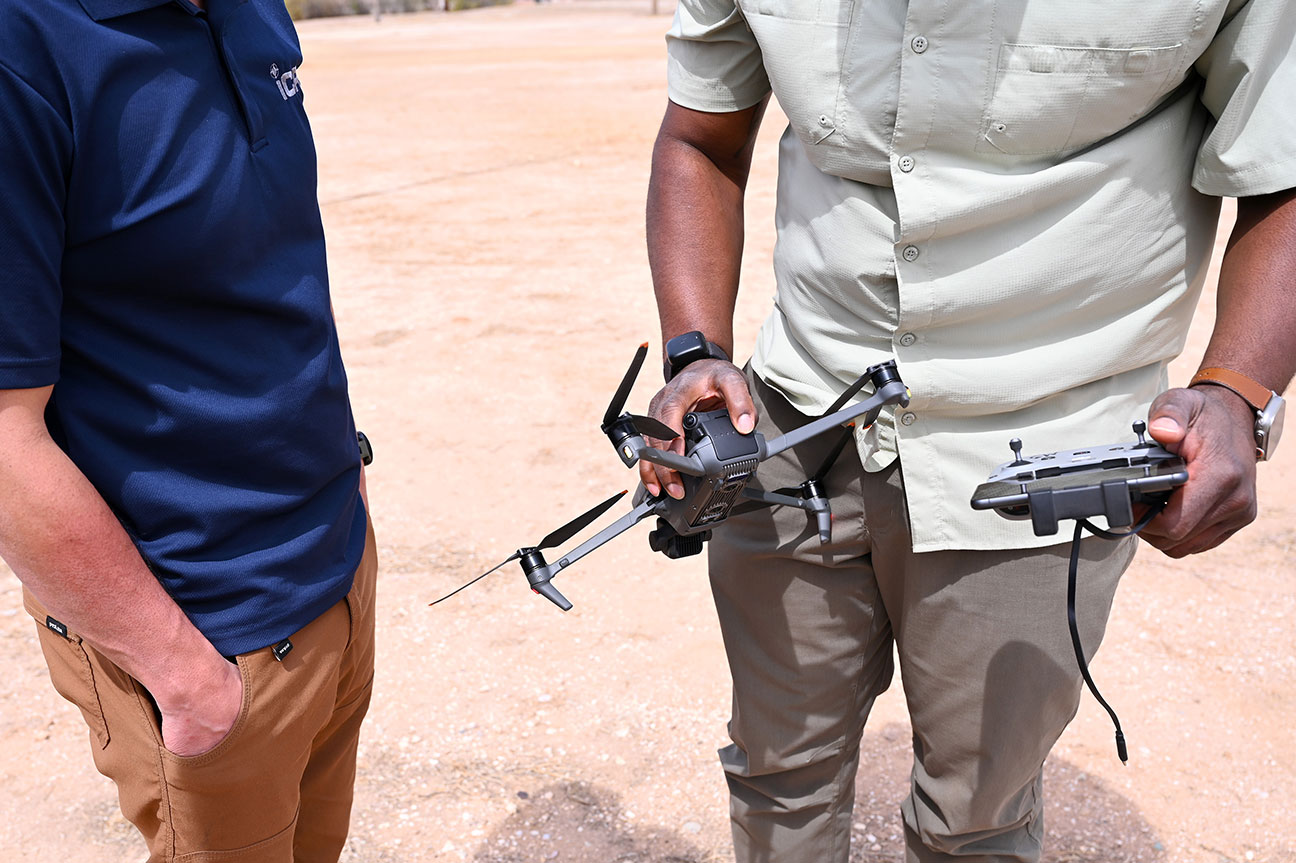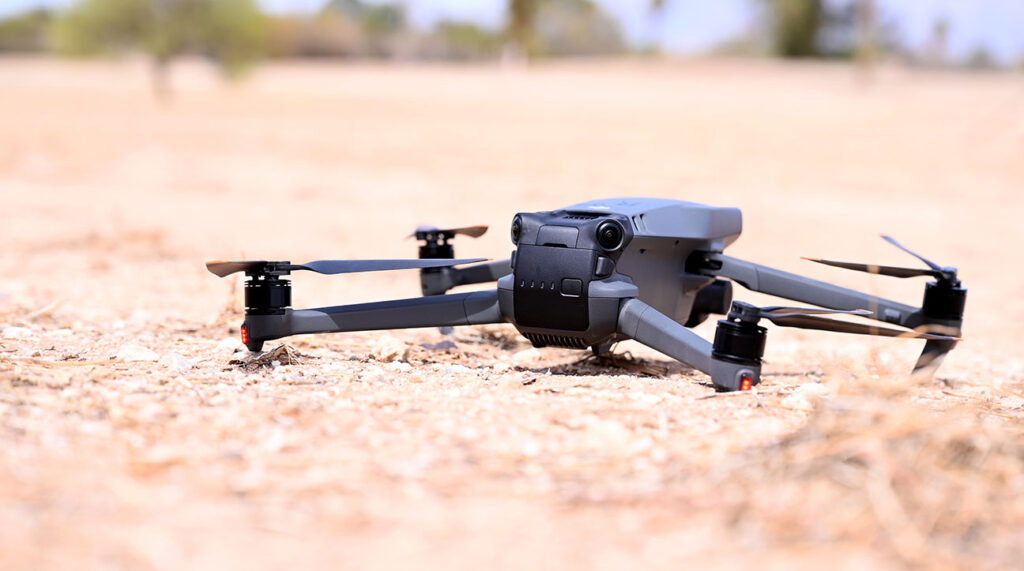A drone lies on the ground after performing aerial maneuvers at Davis-Monthan Air Force Base, Arizona, on April 1, 2025. SENIOR AIRMAN ANDREW GARAVITO/U.S. AIR FORCE
THE WATCH STAFF
As the United States military tests technology to thwart drone incursions at bases around the country, U.S. Northern Command (USNORTHCOM) practiced the authorization and deployment of a counter-small unmanned aircraft system (C-sUAS) flyaway kit March 31-April 4 at Davis-Monthan Air Force Base, Arizona, during Exercise Desert Peak. A flyaway kit refers to a mobile package of counterdrone technology that can be deployed rapidly.
“What NORTHCOM has done is proposed a process where we would bring in flyaway kits to supplement, or in the case where there are no capabilities, provide the initial capability at that base to defeat” drone threats, Gen. Gregory M. Guillot, commander of USNORTHCOM and North American Aerospace Defense Command (NORAD), told the House Armed Services Committee on April 1.
The flyaway kits will include “prepackaged counterdrone technology, along with personnel trained to employ that technology, that can be dispatched via commercial aircraft to get to the installation in need,” a USNORTHCOM spokesperson told Air & Space Forces Magazine. Exercise Desert Peak was designed to demonstrate a rapid and effective response to a complex drone incursion at a U.S. Department of Defense (DOD) installation.
U.S. Coast Guard Cmdr. Paul Miller and U.S. Navy Cmdr. Chuan Napolitano, joint C-sUAS planners for USNORTHCOM, said the approval process for deploying flyaway kits was the primary test for Desert Peak.

On March 31, members of the U.S. Army’s Combat Capabilities Development Command’s Global Operations Support Team, or GOST, launched drones to simulate a complex incursion. That initiated a Conference Uniform, a meeting of stakeholders — including 355th Wing, 355th Security Forces Squadron, and installation representatives — to discuss the situation and work through a request for help.
“Exercise Desert Peak was a resounding success here at Davis-Monthan, showcasing the DOD’s readiness and adaptability in countering the evolving threat of small, unmanned aircraft systems,” said Col. Scott Mills, 355th Wing commander. “By testing both existing and emerging technologies, we were able to not only validate our organic base defense capabilities but also provide invaluable feedback to developers, accelerating the development of innovative solutions for the defense of military installations across the U.S. The lessons learned during Desert Peak will directly contribute to the DOD’s C-sUAS strategy, ensuring we remain vigilant.”
Exercise participants also simulated working with interagency partners to get the approval to operate a system to detect, track, identify and defeat drones. Much of that coordination is with the Federal Aviation Administration to avoid risks to civilian, military and commercial aircraft. “We knew how the process should work, but to see it in action illustrated the importance of rapid, clear communication from the tactical level all the way to the Office of the Secretary of Defense and across the interagency,” Napolitano said.
In testimony before the Senate Armed Services Committee on February 13, 2025, Guillot said the DOD needs more robust technology and expanded authority to counter numerous drone incursions at U.S. military bases. “The availability and utility of small drones has grown exponentially over the last decade, and some have repeatedly employed these systems for illicit purposes,” he testified. “USNORTHCOM will play a critical role in an enduring whole-of-government effort to protect people, infrastructure, aircraft, and facilities from malign sUAS incursions.”
The military also has moved to harden its bases against drone attacks. In March 2025, the U.S. Marine Corps awarded a $642 million, 10-year contract to Anduril to install and maintain nonkinetic counter-UAS systems to protect Marine bases and other fixed sites.

